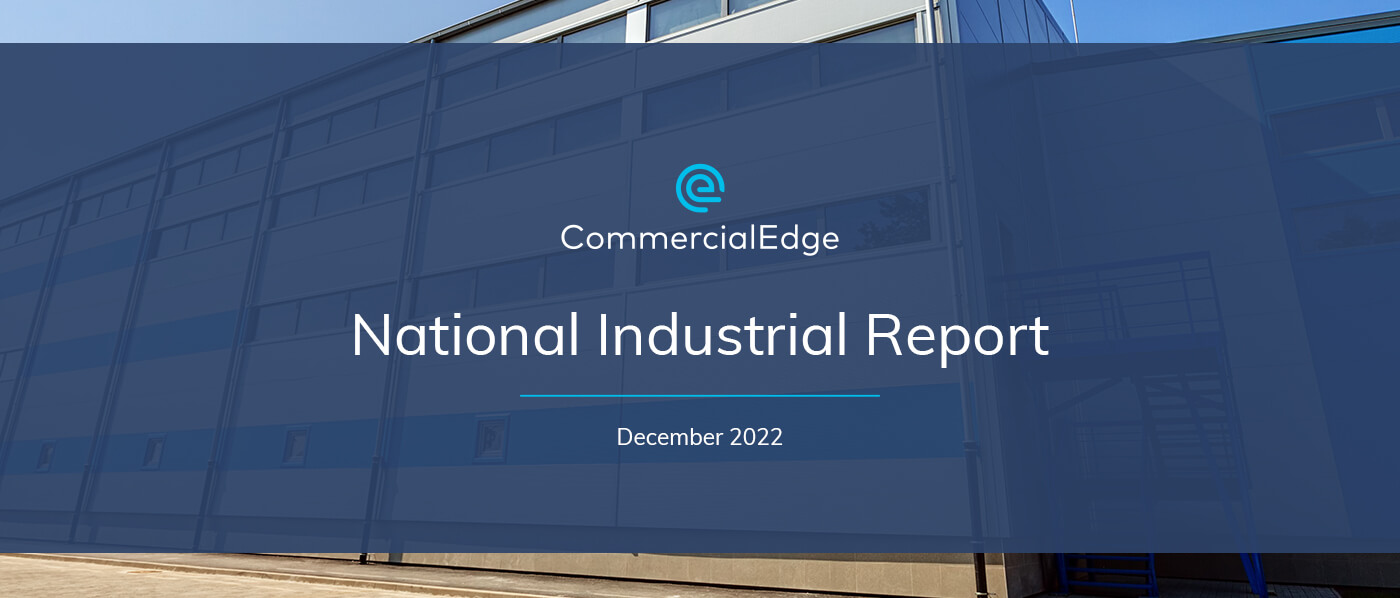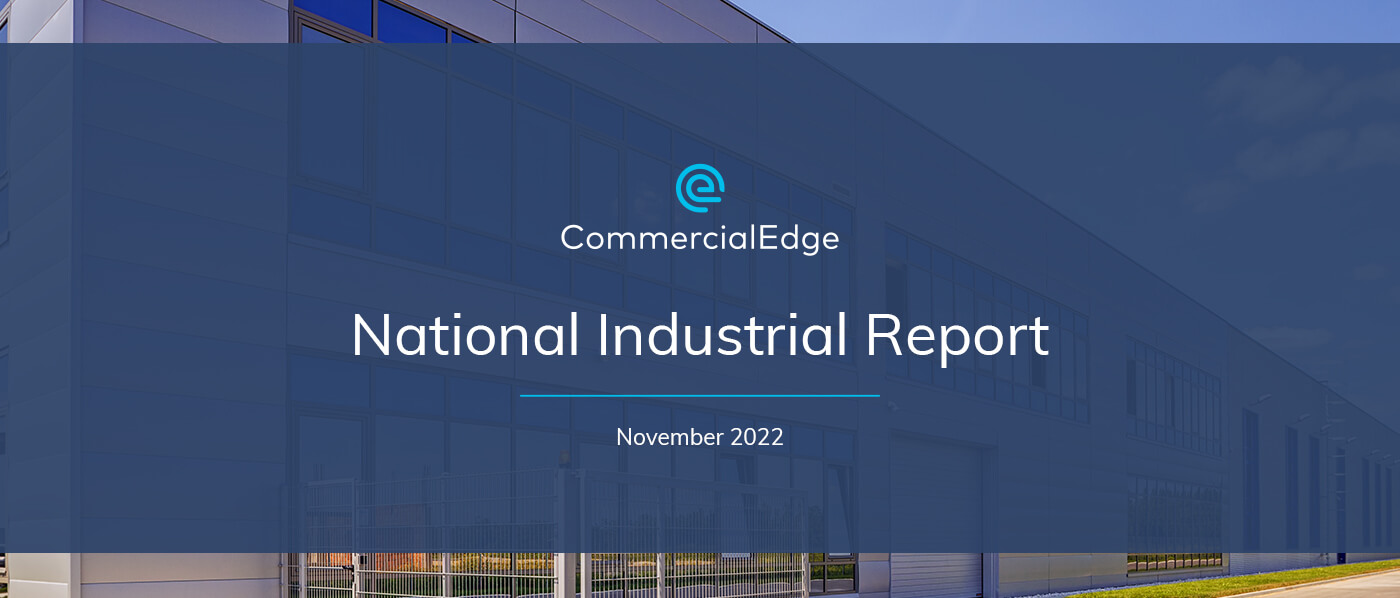Key Takeaways:
- The average U.S. office listing rate stood at $37.67, ticking down 2.4% year-over-year
- Up 180 basis points year-on-year, the national vacancy rate rested at 16.6%
- Under-construction office space totaled 139.1 million square feet in September
- $69.3 billion in office sales were closed in the first three quarters of the year
Office starts are undeniably below pre-COVID levels, but the dramatic crash predicted by some has not occurred so far: 46.6 million square feet of new office space broke ground this year, with the expectation that 2022 will match last year’s 62 million square feet of new stock brought to market.
However, as the office sector rebalances to post-pandemic conditions, new developments exemplify the ongoing geographical and property class shifts in the sector. Gateway markets such as San Francisco, Washington, D.C., and Chicago are adding new office space at a noticeably slower pace, while Sunbelt markets continue to experience only moderate decreases or a veritable office boom: new and planned office starts in Austin, Charlotte and Nashville will increase local stocks by 15% to 23%.
Additionally, CBDs are no longer the preferred location for new starts, supplanted by urban projects outside the central core. Specifically, under construction and planned office projects in CBDs will increase the national stock by 4.3%, while urban starts will add the equivalent of 13%.
The vacancy rate for September stood at 16.6% and will likely rise as fewer leases are renewed. But even so, new office developments continue to break ground as the flight to quality proceeds to intensify. Class A and A+ office starts totaled 130 million square feet at the end of the first three quarters of the year, while Class B accounted for less than 10 million.
Listing Rates and Vacancy: Trophy Tower Drives Miami Listing Rate Growth
While the office market readjusts to tenants’ flight to quality and the imbalance between diminished demand versus excess availability of space, vacancies continue to rise at the national level, while listing rates slip. Specifically, across the top 50 U.S. office markets, the average full-service equivalent listing rate was $37.67 in September, down 2.4% year-over-year.
At the same time, the national vacancy rate was 180 basis points over September 2021, closing the month at 16.6%.
While average listing rates have fallen and vacancies have spiked in many markets over the last year, that is not the case in Miami. Fueled by the relocation of firms and workers to Florida during the last two years, the city sports a 12.1% vacancy rate, while its average listing rate has risen 12.4% over the last twelve months.
Listings by Metro Area: October 2022
The property pushing up rates the most in Miami is 830 Brickell, a 57-floor trophy tower set to deliver before the year is out. Currently the building is listing more than 185,000 square feet, with full-service leases priced from $83 to $150 per square foot. The building has already inked leases with a variety of tenants, from international law firms and asset management companies to Microsoft, which will make the space its new regional headquarters.
Supply: Office Starts Fall in Gateway Markets
Nationally, 139.1 million square feet of new office supply are currently under construction.
In 2022, 46.6 million square feet of new office space have started construction, and the year is on pace to match 2021’s 62.2 million square feet. While the new supply pipeline will not produce starts at pre-pandemic levels — routinely north of 80 million square feet annually —anytime soon, office starts have not dropped coming out of the pandemic as much as expected.
Office Space Under Construction (Million Sq. Ft)
Since COVID-19 began, the geographic composition of office starts has shifted and gateway markets have recorded the largest declines.
Office Space Under Construction & Planned
In 2019, Los Angeles had 3.6 million square feet of starts, but this year only 61,000 square feet of non-owner-occupied office space has begun construction. Chicago started 1.0 million square feet year-to-date in 2022, compared to 5.0 million three years ago. New projects in Manhattan have declined from 3.2 million square feet to just 754,000 this year, while Washington, D.C.’s volume has dropped from 4.7 million square feet to 1.1 million.
National New Supply Forecast
By contrast, starts in Sunbelt markets with high levels of in-migration are relatively unchanged. Austin’s new office development has increased from 5.1 million square feet in 2019 to 5.8 million this year. Other major Sunbelt locations are recording only slight declines.
Transactions: Manhattan and Washington, D.C., Leads Sales Volume
CommercialEdge has logged $69.3 billion of sales through the first three quarters of 2022.
Year-to-Date Sales (Millions)
The Washington, D.C. market has been one of the most active in 2022, with $4.1 billion in volume, nearly equaling the $4.5 billion in sales recorded in each of the previous two years. The highest-priced asset in the market so far — by both total cost and price per square foot — is 601 Massachusetts Ave. NW, a 478,818-square-foot property that traded for $531 million ($1,109 per foot). The amenity-laden building in the Seventh Street Corridor was delivered in 2015 by Boston Properties, which sold the building to Mori Trust.
Year-to-Date Sale Price Per Square Foot
Asset Class Price Per Square Foot
Quarterly Transactions (Billions)
Quarterly Transactions Price Per Square Foot
Western Markets: San Diego Office Rents Outpace Los Angeles
San Francisco continues to lead western markets in terms of asking rents, posting a rate of $66.75 per square foot in September — more than double the national average —as the result of a 3.3% Y-o-Y increase. The Bay Area followed with an average rent of $53.93 per square-foot, after rents contracted 2.8% compared to the year-ago rate of $55.46 per square-foot, while vacancies rose 0.11% during the same timeframe.
And while Los Angeles office rents have been historically higher than San Diego rates, rankings have been upended by current market conditions, most likely influenced by the San Diego office market’s increased resilience due to its life sciences sector. Thus, San Diego closed September with a $43.91 per square foot rate, while Los Angeles clocked in at $43.06 per square foot.
Further up the coast in the Pacific Northwest, Seattle continued to post higher asking rents than Portland, with rates coming in at $36.79 per square foot and $30.09 per square foot, respectively. And while Seattle office rates came in over year-ago rates, in Portland rates slipped 0.9% below year-ago figures. Rents for Denver office space also trended up, albeit at a modest 0.6% year-over-year, resting at $30.14 per square foot.
West Regional Highlights
In terms of new supply, both Seattle and the Bay Area had the equivalent of 4.5% of their existing stock under construction, with Seattle set to add 18.8% and the Bay Area 5.3% when taking into account planned projects. San Diego came next with under construction office projects accounting for 4.3% of its stock, with its pipeline rising to 9.9% when considering planned developments as well. Other major Western office markets’ under construction projects accounted for less than 4.0% of their stock, with Portland’s pipeline at a mere 0.7%.
From a transactional perspective, the Bay Area was the only Western market to surpass $3 billion in office sales, but Los Angeles followed close behind with $2.89 billion. Denver had the third-largest sales volume on the West Coast at $2.88 billion, with Seattle and Phoenix also in the $2 billion and over range at $2.63 billion and $2.12 billion, respectively.
However, San Francisco claimed the highest year-to-date sales price not only on the West Coast, but nationwide as well at $941 per square foot, followed by Seattle’s $583— the third-highest rate nationwide. Phoenix clocked in at $277 per square foot, surpassing the national rate of $263.
Midwestern Markets: Chicago’s $2.5 Billion Sales Volume One of the Ten Largest in the U.S.
In the Midwest, both Chicago and the Twin Cities saw asking rents trend month-over-month, but year-over-year, both markets contracted. As such, Minneapolis - St. Paul closed September at $25.64 per square foot following a 4.9% year-over-year drop. Chicago rates ticked down at a slower 2.1% rate, going from the year-ago $28.09 per square foot to $27.51 per square foot in September 2022.
In terms of vacancies, the Twin Cities saw vacancies inch down, while Chicago’s office market saw vacancies increase by 3.1%.
Midwest Regional Highlights
From a sales perspective, the Midwest’s two top markets both posted year-to-date sale prices below the national average of $263 per square foot. Specifically, Chicago’s office assets traded at an average of $182 per square foot and the Twin Cities averaged $123 per square foot for office transactions. As a result, Chicago had the 22nd and the Twin Cities the 25th highest year-to-date sale price among the nation’s leading office markets.
But while Minneapolis – St. Paul closed $844 million in office sales in the first three quarters of the year, Chicago totaled $2.5 billion — the tenth largest office sales volume in the U.S.
When it came to new supply, both markets were below the national average of 2.1% of existing stock. Specifically, Chicago’s under-construction office projects accounted for 1.0% of its existing stock, while the Twin Cities’ office starts with shovels in the ground accounted for 0.5% of its current stock.
Southern Markets: Washington, D.C. Closes $4.1 Billion in Office Sales in First Three Quarters of the Year
Miami remained the darling of the Southern office sector with asking rents continuing to rise and reaching $48.32 per square foot. It was followed by Austin’s $42.03 per square foot rate, the result of a 4.0% year-over-year contraction, while Washington, D.C. inched up nearly 2.0% year-over-year to rest at $41.43 per square foot. Of the ten Southern office markets ranking among the country’s leading 25, half recorded decreases and half increases in average asking rents, while vacancies were on the rise in seven.
In Texas, Austin was not the only market where rents slipped below year-ago figures, with Houston rates inching 1.6% year-over-year to rest at $29.86 per square foot. Asking rents in the Dallas – Fort Worth area stood at $28.50 per square foot, 0.9% below year-ago figures, with vacancies ticking up 0.6% year-over-year. In Florida, Orlando rates rose to $23.70 per square foot with vacancies also on the upswing at a 1.7% year-over-year rate. Tampa rents trended down to $28.09 per square foot, with vacancies 1.3% higher than year-ago figures.
South Regional Highlights
In terms of sales, Washington, D.C. claimed the second-largest office sales volume in the U.S. at $4.1 billion, while Dallas was fifth with $3.74 billion in office sales and Atlanta followed with $2.69 billion. Tampa and Orlando totaled less than $1 billion in office deals in the first three quarters of 2022, closing $729 million and $538 million, respectively.
However, Miami claimed the highest year-to-date sales price in the South at $393 per square foot, followed by Austin at $384, Charlotte’s $303 per square foot and Washington, D.C. at $302, with all four markets comfortably above the national average of $263 per square foot.
New office developments continued at a quick pace in Austin, Charlotte and Nashville, which had the most robust office development pipelines in the country from the perspective of increases to existing stock. Specifically, Austin’s under construction projects accounted for 8.5% of its existing stock, Charlotte’s for 7.7% and Nashville’s for 5.6%. Even in terms of square footage, Austin and Dallas had some of the largest development pipelines, outpaced only by the Bay Area, Boston and Manhattan.
Northeastern Markets: Boston Sales Volume Surpasses Combined Sales of New Jersey, Philadelphia and Brooklyn
Manhattan, of course, continued to post the steepest asking rent in the U.S., closing September at $70.37 per square foot and a 0.8% year-over-year contraction. As expected, Brooklyn was the second-priciest office market in the Northeast at $50.24 per square foot. Boston, New Jersey and Philadelphia had the next highest rents, resting at $40.33 per square foot, $32.88 per square foot and $30.58 per square foot, respectively.
Manhattan, as expected, had the largest sales volume in the country by a significant margin, closing $5.46 billion in office sales, with Washington, D.C.’s $4.1 billion the next largest. Boston’s sales volume total was just $2 million shy of $4 billion. As a result, Boston’s sales volume was larger than the combined sales volumes of New Jersey ($2.21 billion), Philadelphia ($1.03 billion) and Brooklyn ($607 million).
And while Philadelphia’s and New Jersey’s year-to-date sale prices of $200 per square foot and $234 per square foot were under the $263 per square foot national average, Manhattan, Boston and Brooklyn were among the five most expensive office markets in the U.S. Specifically, Manhattan’s $858 per square foot was second, while Boston’s $485 and Brooklyn’s $480 were fourth and fifth.
Northeast Regional Highlights
In terms of new supply, Manhattan and Boston had the largest square footage of office space under construction at 18.6 million square feet and 12.44 million square feet, respectively. That accounted for 4.1% of Manhattan’s existing stock and 5.2% of Boston’s. In fact, when taking into account office projects in the planning stages, Boston is set to increase its office footprint by 12.4%. Conversely, New Jersey’s 1.37 million square feet of office space currently under construction is set to expand its footprint by a mere 0.7%. When taking into consideration planned projects as well, New Jersey’s pipeline accounts for 1.8% of its existing stock, for the slowest rate of increase in office space among the top 25 office markets in the U.S.
Office-Using Employment: Financial Activities Sector Hiring Wanes
Office-using sectors of the labor market added 51,000 jobs in September, according to the Bureau of Labor Statistics (BLS).
The financial activities sector has slowed in recent months and turned negative in September, losing 8,000 jobs. Before the pandemic, employment growth between all three office-using sectors moved more or less in sync. Following the pandemic, however, financial activities has fallen behind Information and professional and business services (PBS). In every month since April 2021, the Information and PBS sectors have grown at an annualized rate of more than 5%.
In contrast, the financial activities sector’s peak growth rate during was just 2.4%, recorded in June 2022. In August, seven of the top 25 markets covered by CommercialEdge — Denver, Boston, the Bay Area, San Diego, Phoenix, Los Angeles and Washington, D.C. — lost financial activities jobs year-over-year. That slowdown is bad news for the office industry, as financial sector workers are some of the most likely to come into the office full-time.
Office-Using Employment Growth by Sector
Trends & Industry News: Flex Space Demand Drives Expansion
Driven by hybrid work arrangements, a flight-to-quality among occupiers and a desire to avoid long-term leases, demand for flexible office space is rapidly increasing.
An analysis of surveys from major brokerages indicates that demand for flexible office space will continue to grow in coming years. JLL’s Future of Work Survey of more than 1,000 corporate real estate decision-makers found that 43% of firms plan to increase investment in flex space through 2025.
CBRE’s Occupier Sentiment Survey showed while only 17% of U.S. occupiers report that flex space is a significant portion of their real estate portfolios today, 59% said that it will be significant within the next two years. It’s not only C-suite decision-makers driving demand, however, but workers as well. A joint WeWork and Cushman & Wakefield survey found that people in WeWork offices currently spend 40% of their work time in the flex space but want to increase that to 55% in the future.
Given the flexibility and amenities coworking locations provide, there is real opportunity to align with what corporations are needing in future space decisions. We’re tracking around 120 million square feet of flexible space and expect that number to rise significantly in the future.
Peter Kolaczynski, CommercialEdge Senior Manager
Commercial real estate brokerages are taking notice and increasing their investments in coworking. After investing more than $200 million in Industrious in 2021, CBRE put an additional $100 million into the flex space operator this year.
Cushman & Wakefield entered a strategic partnership with WeWork, investing $150 million and combining the coworking firm’s hospitality technology with the brokerage’s asset and facilities management services. JLL is operating coworking spaces under the brand Flex by JLL and will be developing a ground-up, 15,407-square-foot coworking space in Secaucus, N.J.
Meanwhile, established industry participants are also increasing their footprints. Over the summer, IWG, the parent company of both Regus and Spaces, announced it would be adding at least 500 U.S. locations with a focus on smaller cities and the suburbs. Between its two brands, IWG already has upward of 1,000 coworking locations in markets covered by CommercialEdge. WeWork, the second-largest operator, has more than 250 spaces.
The shift to hybrid work is also leading owners to consider operating their own coworking spaces in an effort to restore occupancy and cash flow. Boston Properties has rolled out FLEX by BXP in a handful of its buildings and Irvine Company offers Flex Workspace+. However, smaller landlords may be wary of the large capital expenses that come with building out high-quality flex space and may look to dedicated operators instead. Management agreements which allow owners and flex space operators to share revenue could become a common solution.
Download the PDF report to view more, including the map for office-using employment growth.

You can also see our previous office reports.
Methodology
This report covers office buildings 25,000 square feet and above. CommercialEdge subscribers have access to more than 14,000,000 property records and 300,000 listings for a continually growing list of markets.
CommercialEdge collects listing rate and occupancy data using proprietary methods.
- Listing Rates — Listing Rates are full-service rates or “full-service equivalent” for spaces that were available as of the report period. CommercialEdge uses aggregated and anonymized expense data to create full-service equivalent rates from triple-net and modified gross listings. Expense data is available to CommercialEdge subscribers. National average listing rate is for the top 50 markets covered by CommercialEdge.
- Vacancy — The total square feet vacant in a market, including subleases, divided by the total square feet of office space in that market. Owner-occupied buildings are not included in vacancy calculations.
- A and A+/Trophy buildings have been combined for reporting purposes.
Stage of the supply pipeline:
- Planned — Buildings that are currently in the process of acquiring zoning approval and permits but have not yet begun construction.
- Under Construction — Buildings for which construction and excavation has begun.
Office-Using Employment is defined by the Bureau of Labor Statistics as including the sectors information, financial activities, and professional and business services. Employment numbers are representative of the metropolitan statistical area and do not necessarily align exactly with CommercialEdge market boundaries.
Sales volume and price-per-square-foot calculations for portfolio transactions or those with unpublished dollar values are estimated using sales comps based on similar sales in the market and submarket, use type, location and asset ratings, sale date and property size.
Stay current with the latest market reports and CRE news
Latest Posts
Recent Reports
Despite Record New Supply, National Industrial Vacancy Dips Below 4%
More than 742 million square feet of industrial space was under construction at the end of November as demand continues to outstrip supply.
Tech Sector Downsize Further Challenges Office Recovery
The average listing rate for office space stood at $38.06 in November, while vacancies rested at 16.2% across the top 50 U.S. office markets.
Driven by Shipping and Logistics, National Development Pipeline Nears 714 Million Square Feet
National industrial in-place rents averaged $6.95 per square foot, up 5.8% year-over-year as demand remains strong





